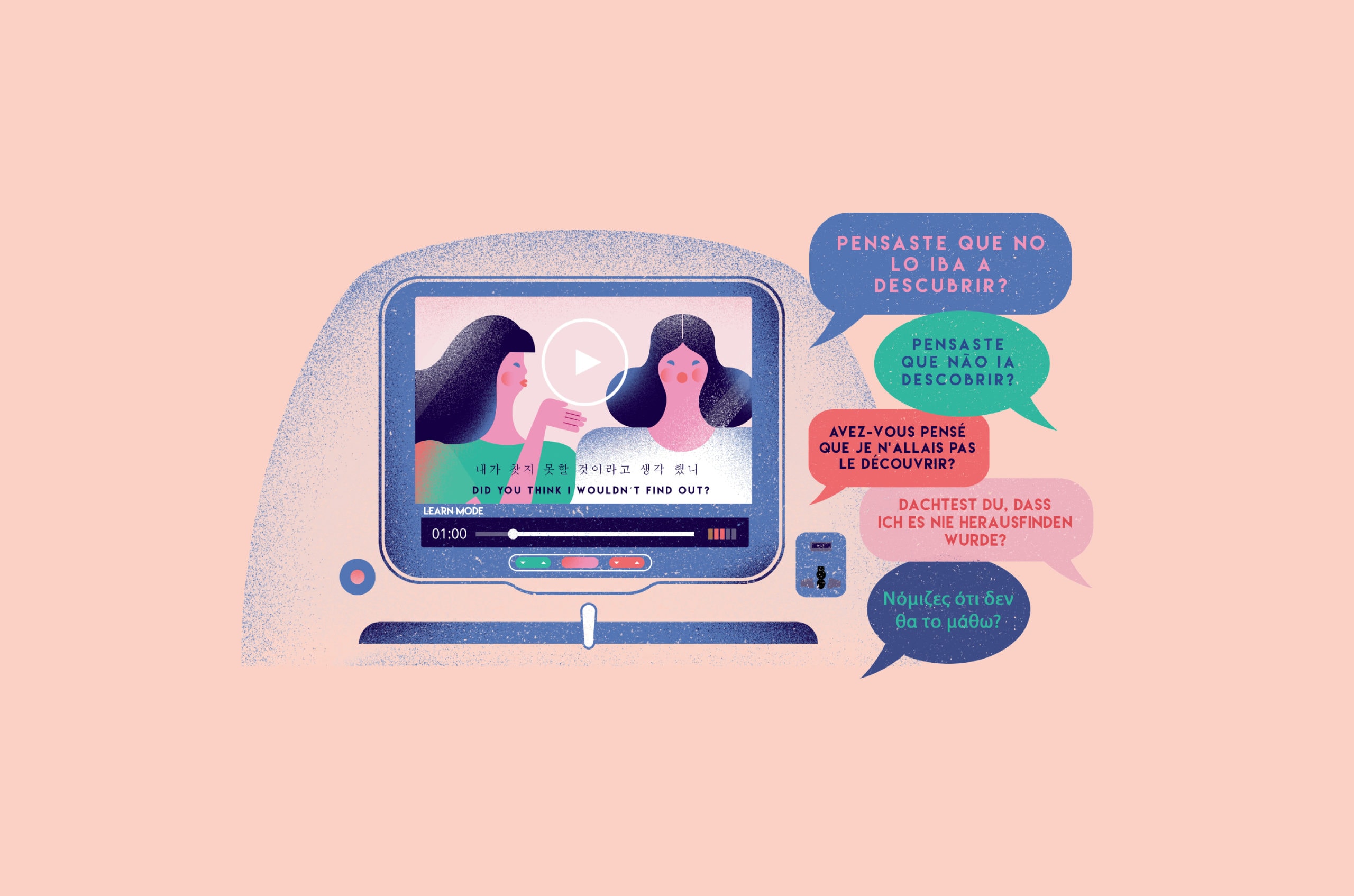
A new breed of language-learning is turning TV shows and movies into educational tools. Can it make passengers’ time in flight more productive, too?
The airline cabin is an unexpectedly conducive environment for studying a foreign language: Passengers can’t get up and leave, and there’s the added motivation of arriving in a country where you can’t speak the language. After all, what better incentive is there for practicing your Italian verbs than the prospect of touching down in Rome in just a few hours and being able to order “un piatto di gnocchi al pomodoro fresco, per favore.”
Singapore Airlines was among the first to take note of the suitability of language learning in the skies, when it worked Berlitz’s material into its KrisWorld in-flight entertainment (IFE) system in 2005. Last year, British startup uTalk boarded Emirates and easyJet – a great idea, according to Richard Howeson, chairman of the language-learning company. “With very little effort, passengers can learn enough to order their first drinks or negotiate transport, all by the time their plane lands,” he said at the time.
Wireless IFE provider Immfly has also offered language learning programs such as uTalk on its platform, which garnered “excellent take-up rates and engagement,” says Maria Girão, the company’s marketing and communications manager. “Providing a relevant offering matching the customer demographic, with a good range of languages and broad coverage of fluency levels, [is an element] Immfly considers fundamental to such a proposition,” she adds.
“Even the most rudimentary words can be of crucial help in a foreign country.” – Maria Girão, Immfly
Narrative video is emerging as a medium for language learning, with the popularity of Rakuten-owned streaming service Viki, which is a sort of mix between Hulu and Wikipedia – its name is a play on “video” and “wiki.” It streams a library of licensed content that viewer-volunteers can then subtitle themselves and re-add to the platform’s ever-growing library. Movie enthusiasts from all over the world have been translating the subtitles of their favorite foreign films into their own languages (think: a telenovela subtitled by a Chinese viewer or an anime subtitled by a Greek fan). Using Viki’s Learn Mode, viewers can watch a film with both native-language and original-language subtitles at once.
While Viki hasn’t found its way on board aircraft just yet, Immfly’s ongoing collaboration with Rakuten (from which it has procured content for easyJet and Pegasus Airlines) means it can’t be ruled out. “Immfly has already facilitated the provision of services such as Rakuten TV, Rakuten Kobo, Rakuten Viber and Rakuten Games, and plans on expanding the collaboration with additional Rakuten services,” Girão says.
As video technology gets more sophisticated, the door is open for deeper language-learning experiences in the cabin – should an airline deem it worthwhile from a passenger experience perspective. “The key to unlocking the potential is reliant on providing a relevant user experience, adapted to the onboard environment,” Girão says. “Irrespective of the device used, however, the opportunity to brush up or learn the basics enriches the travel experience – even the most rudimentary words can be of crucial help in a foreign country.”
“Watch and Learn” was originally published in the 9.3 June/July issue of APEX Experience magazine.


